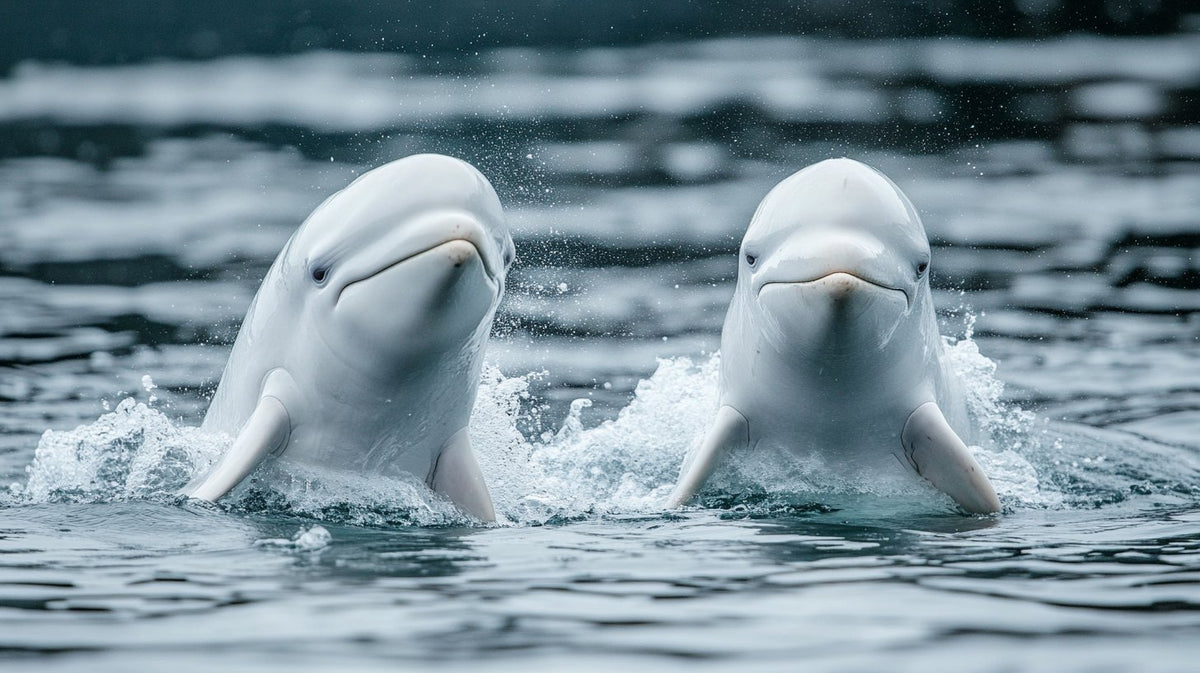
The Real Reason Behind the Death of Hvaldimir the Spy Beluga
|
|
Who Was Hvaldimir?
Ever heard of Hvaldimir, the beluga whale? He wasn't just any whale. Picture this: a friendly beluga swimming up to fishermen off Norway's coast in April 2019. What made him special? He wore a harness with a camera mount that read "Equipment St. Petersburg" in English. Sounds like a spy movie, right? No wonder people thought he was a secret agent for Russia!
Hvaldimir's name is a quirky mix of "hval," the Norwegian word for whale, and "Vladimir," as in Vladimir Putin. Cute, isn't it? But his story took a dark turn not too long ago. Let’s dive into what really happened.
Imagine fishing with your family and spotting something unusual in the water. This hot August day wasn’t just any day for a father and son fishing in Risavika Bay, southern Norway. They saw Hvaldimir floating lifeless. The media went wild. Why wouldn't they? This wasn't just any dead whale; it was Hvaldimir, the spy Beluga!
Rumors started flying faster than seagulls over a fishing boat. Animal rights groups NOAH and One Whale said someone shot Hvaldimir. They even had photo evidence showing what looked like bullet holes. Who does that?
The claims led to an uproar. Social media was ablaze, and everyone demanded answers. The police jumped in to investigate. Norwegian TV channels fed the frenzy, broadcasting updates every hour. Would we ever know how Hvaldimir died? Let's see.
The Norwegian police got to work. They performed a preliminary autopsy that revealed startling findings. Everyone expected to hear about bullet wounds. Instead, the autopsy found something stranger and sadder.
Guess what? There were no guns involved. The photos that seemed to show bullet holes? The police said they were just superficial injuries. Imagine that! No bullets. No spy games gone wrong. The Norwegian Veterinary Institute ran X-rays of Hvaldimir's body. Not a single bullet found. This was huge.
So if bullets didn't kill Hvaldimir, what did? The autopsy uncovered a grim reality. They found a 14-inch long stick stuck in his mouth. Yes, a stick, like the kind you'd find washed up on a beach. It was about 1.2 inches wide. This wasn’t just any stick; it was a death sentence for Hvaldimir.
Why was a stick so deadly? It blocked his ability to eat. Think about it. A whale needs to eat. If it can't, it's like a ticking time bomb. Hvaldimir's stomach was empty. His organs? Failing. Every day without food was a step closer to the end. The poor whale likely starved to death.
Amund Preede Revheim, a bigwig at the North Sea and environment section of the Sør-West police district, went on record. He said no human activity directly caused Hvaldimir's death. You know what that means? The stick wasn’t shoved there maliciously by someone. The hows and whys were still up in the air.
What started as a small protest has grown into a global outcry. Each year, as more people join, the message grows stronger. The goal? To end captivity for entertainment forever. For those animals that can’t be returned to the wild, seaside sanctuaries are the next best thing. They offer a more natural environment where these animals can live out their lives peacefully and with dignity.
Hvaldimir's story wouldn't be complete without understanding his past. During the Cold War, Russia trained marine animals. Not just whales, but dolphins and seals too. They acted like underwater scouts, searching for underwater weapons and naval threats. Cool? Scary? Maybe both. The program officially ended in the 1990s. Or did it? No one knew for sure. The mystery made Hvaldimir's spy whale nickname all the more intriguing.
For a while, Hvaldimir seemed happy. He swam along the Norwegian coast, delighting locals and tourists alike. Kids loved him. Adults found his antics adorable. He wasn't just an animal; he was a celebrity. Norwegian fishermen called him “our whale.” Hvaldimir brought a touch of magic to Norway's fjords and harbors.
Even with the autopsy results, some people weren’t ready to let go. Animal rights activists and marine biologists demanded more answers. They wanted every detail, every piece of the puzzle. NOAH and One Whale weren't satisfied. They questioned the superficial injury findings. Photographs showed what looked like bullet wounds. Activists claimed the authorities missed something. What if Hvaldimir didn’t die from the stick alone?
Marine biologists were torn. Some sided with the official autopsy. Others called for independent reviews. They wanted to make sure no stone was left unturned. The media got wind of this. New theories, accusations, and debates hit the headlines. One journalist even called it a "sea saga."
Hvaldimir's death was more than just a news story. It was a mystery, a tragedy, and a call to action. The final autopsy report was the next big reveal. Everyone hoped it would answer lingering questions. One thing was clear: Hvaldimir’s life and death taught us about the importance of wildlife, the dangers they face, and how much we still don’t know.
So, what can you do? Hvaldimir's story isn't just a tale to share at dinner parties. It’s a wake-up call. Support marine life conservation efforts. Spread the word about protecting our oceans. Report any suspicious activities near wildlife to the authorities. Little actions can lead to big changes. Let’s honor Hvaldimir by making the world safer for his friends still swimming out there.
- [Norwegian Veterinary Institute](https://www.vetinst.no/)
- [NOAH - For Dyrs Rettigheter](https://www.dyrsrettigheter.no/)
- [One Whale](https://www.onewhale.org/)
References
1. [Norwegian police dismiss bullet wound claims in death of famed 'spy whale' - The Guardian](https://www.theguardian.com/environment/2023/sep/02/norwegian-police-dismiss-bullet-wound-claims-in-death-of-famed-spy-whale)
2. [The strange story of Hvaldimir the spy whale - BBC](https://www.bbc.com/news/world-europe-62182378)
3. [NOAH and One Whale demand investigation - Animal Rights UK](https://www.animalrights.com/2023/09/noah-and-one-whale-demand-investigation-into-hvaldimirs-death/)
By sharing Hvaldimir’s tale, we ensure his legacy lives on. We make the world a better place for marine creatures, one story at a time.




